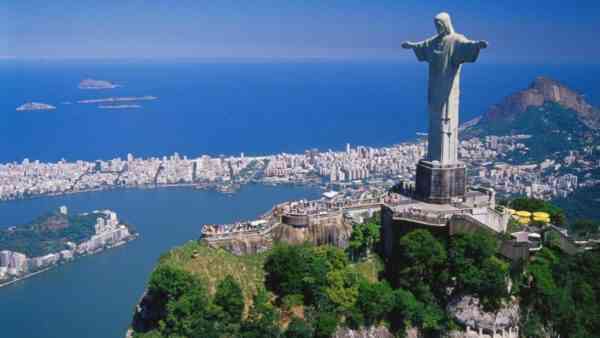The Brazilian city of Rio de Janeiro is famous all over the world for its famous carnival, but here and without it there is always something to do. Amazingly beautiful beaches, delicious food, interesting excursions – just to have time to see everything in the time allotted for vacation. But you should be careful, after all, Rio, unfortunately, is not among the safe cities.
Facts about the city of Rio de Janeiro
- Contrary to popular belief, this city is not the capital of Brazil. For a long time he disputed this role with another metropolis, Sao Paulo, and as a result, in order not to offend anyone, the authorities erected a new city, which was called Brasilia and became the capital (interesting facts about Brazil).
- The name Rio de Janeiro is translated from Portuguese as «January River». True, there is no river here – the navigators who discovered these lands made a mistake and mistook an ordinary bay for a river mouth. But the name stuck and eventually stayed.
- There are more than 1,000 slums in Rio, which are called favelas. Some of them are relatively safe, while others even the police prefer not to call.
- It is here that the huge statue of Christ the Redeemer, which is the symbol of the city, is located. It is included in the New 7 Wonders of the World.
- Initially, the city was called San Sebastian de Rio de Janeiro in honor of the then ruling Portuguese monarch, but then the name was shortened.
- The lowest temperature ever recorded here is only +6 degrees.
- For 12 years, Rio de Janeiro was the capital of Portugal. This was due to the flight here of the Portuguese royal family, fleeing from the troops of the French Emperor Napoleon (interesting facts about Napoleon).
- The sky over Rio is the bluest in the world, according to one study.
- In February 2018, the level of criminogenic danger here reached such heights that the authorities were forced to send an army into the city to contain the raging criminals.
- The carnival in Rio de Janeiro is the largest in the world. It ranks first both in the number of official participants (about 2 million) and in the number of foreign guests arriving at this event.
- About 5 times more people live here than in all of Estonia, and that’s not counting the suburbs. Yes, and the population of the favelas is problematic to count (interesting facts about Estonia).
- The famous Brazilian samba dance originates here. Initially, it was a dance of African slaves brought here by the Portuguese to work on plantations.
- The construction of the 38-meter statue of Christ the Redeemer, made, by the way, from Swedish stone, lasted 9 years.
- The giant seaport of Rio de Janeiro handles one third of all imports to South America.
- This city is built on the Gulf of Guanabara, notable for having more than 100 islands.
- Here is the largest forest in the world among those located within the city.
- Three-quarters of the inhabitants of Rio de -Janeiro regularly attend football matches, and everyone is interested in football to one degree or another.
- The self-name of local residents is «carioca». And this is not the name of the Brazilians in general, but the residents of Rio.
- The walls of most buildings in Rio de Janeiro are painted with graffiti. By the way, there are much more original and beautiful paintings than low-grade daubs.
- The oldest tram line in South America has been operating here since 1896.
- At night, drivers in Rio de Janeiro officially have the right not to stop at a red traffic light, as there is a high chance of being robbed on deserted streets.
- There are about 75 kilometers of bike lanes. They are laid mainly along the picturesque places on the coast.
